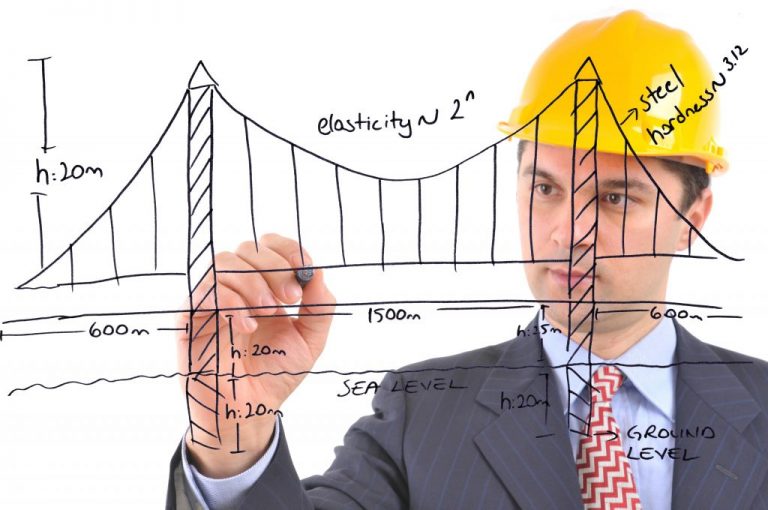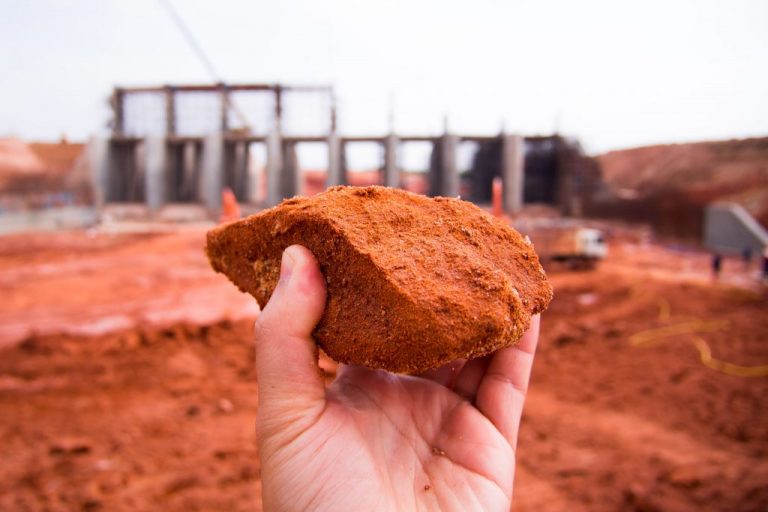Engineers apply cutting-edge scientific technologies to solve problems across every industry imaginable. From working to mitigate the effects of climate change, to developing new drugs to help fight the next global pandemic, engineers provide invaluable services to our society. In the rapidly changing world we live in today, it is vital for engineering companies to acquire the resources they need to meet our world’s growing challenges head-on.
Federal and state governments understand this necessity, which is why billions in R&D tax credits are given to corporations every year to help catalyze their research projects while maximizing their profitability.These R&D tax credits raise engineering companies’ bottom line,allowing them to continue doing what they do best – solve the world’s problems.

R&D Tax Credits in the Engineering Industry
The R&D Tax Credit was first introduced in the United States through the Economic Recovery Tax Act of 1981. With worries that the U.S. was falling behind in production and innovation relative to the global economy, the Economic Recovery Tax Act aimed to stimulate the U.S. economy and encourage investment within the United States. Though this tax credit was originally only anticipated to last for two years, the PATH Act of 2015 permanently extended the R&D Tax Credit due to the immense value that research and development brings to the U.S. economy each year.
How does an Engineering company qualify for the credit
There is a four – part test used to determine whether a company has a project that qualifies for the R&D Tax Credit. If you have a project that meets each of the four quadrants below, your project most likely qualifies
Technological in nature
- Discover information that fundamentally relies upon principles of Hard Sciences (i.e. Physical Sciences, Biological Sciences, Engineering, Computer Science, etc.)
- Not social, economic, or psychological Permitted Purpose
Permitted Purpose
- Develop a new, or improve an existing, product or process
- Related to Functionality, Performance, Reliability, Quality, Significant cost, Savings, etc.
- Not Aesthetics
Eliminate Uncertainty
- Capability
- Uncertain if able to achieve desired result
- Methodology
- Uncertain of optimal design or process to achieve project goals
- Goals to show there were issues and potential alternate solutions
Process of Experimentation
- Evaluate and test alternative design or process to identify optimal solutions
- Methods to use
- Prototyping
- Modeling
- Systematic Process of Trial and Error Simulation
- Computer Science Testing (Validation, Beta, etc.)
Once a company determines that their project meets these criteria, three expense categories factor into the tax credit calculation:

Wages
- Employees involved in conducting or carrying out qualified research.
- Employees providing supervision of qualified research.
- Employees providing support for qualified research activities.

Supplies
- Resources consumed or used up during the carrying out of qualified research.

Contract Research
- 3rd parties paid to assist in the conducting or carrying out of qualified research.
- Requires the Company to maintain rights to the project (i.e. research performed on behalf of the Company)
- Requires the Company to bear the expense if the research is unsuccessful.
All disciplines within the engineering industry are capable of qualifying for these R&D tax credits. Some of the major disciplines that routinely claim these tax credits each year include:

Computer Engineering
With the rise of big tech and the massive fortunes generated by software companies each year, computer engineering is perhaps the most fast-paced, dynamic industry in the United States. Startups and large software corporations, alike, are in a constant R&D battle to innovate the next big thing or be rendered obsolete. Qualifying R&D activities that a computer engineering company might partake in include:
- Creating a new software or hardware to bring to the market.
- Developing a new feature to add to an existing software package.
- The building out of a new software to integrate with an existing technology (e.g. a new app to integrate with a Fitbit watch), or vice versa.
- Innovating models within an industry outside of tech (e.g. manufacturing or environmental) to optimize productivity or design.
Given how quickly the online landscape is constantly evolving, it is vital that a company involved in computer engineering and technology can take advantage of every tool possible to maximize their R&D budget while still remaining profitable. If you work within the tech industry, learn more about how R&D Tax Credits can put more money in your company’s pockets here.
Mechanical Engineering
Mechanical Engineers design, develop, build, and test mechanical and thermal sensors, devices, valves, and other mechanical components. Typical qualifying R&D activities undertaken by a Mechanical Engineering company might include:

- Designing or developing a new ventilation, plumbing, or piping system.
- Performing CAD modeling or drafting of a new mechanical system.
- Inventing new water/wastewater or oil and gas technologies.
- Developing a new type of pump, or a new pumping application.
The opportunities are endless – whether your company designs space shuttles or sewer pipelines, you are likely eligible to take advantage of the R&D Tax Credit.

Civil Engineering
It’s a common misconception that civil engineering companies are unqualified for the R&D Tax Credit since their projects typically involve constructing large infrastructure systems rather than developing a new product. However, many activities that a civil engineering company is involved with on a daily basis do, in fact, pass the four-part test. These activities may include projects like:
- Developing a new stormwater model to project and improve wet weather flows.
- Creating new technologies and/or processes to test for COVID-19 in wastewater.
- Construction of a program that uses the Monte Carlo method to estimate construction costs in order to maximize functionality and performance, while minimizing costs.
- Performing BIM modeling of a dam to help determine flow patterns in order to improve the dam design.
Structural Engineering
As a specialization within civil engineering, structural engineers design and assess major projects such as buildings, bridges, and dams to ensure their strength and durability. In addition to infrastructure, structural engineers are often involved with structural design within the manufacturing industry – they may work on an airplane or automobile frame, for instance. R&D within the structural engineering industry is widespread; a few qualifying activities may include:
- Material testing.
- BIM, RISA, or Revit modeling of a structural system.
- Seismic load testing.

As structural engineering is largely trial and error during the design process, almost every structural engineering project has a strong case for claiming the R&D Tax Credit.

Geotechnical Engineering
Another specialization within civil engineering, geotechnical engineers analyze soil conditions for use in the design of building foundations, slopes, retaining walls, dams, and other structures. Similar to structural engineering, many of the research activities conducted by geotechnical engineering companies qualify for the R&D Tax Credit. Qualifying activities may include:
- Developing new ways to perform soil analysis and test boring samples
- Creating new methods to collect data in the field (e.g. a new method to test soil compaction
- Generate alternatives for compaction testing in the field – using different types of nuclear density testing devices, for instance
- Developing potential tunneling alternatives (i.e. micro-tunneling, conventional tunneling, directional drilling, hand mining, etc.
Chemical Engineering
Chemical engineers apply principles of chemistry, biology, physics, and math to solve problems in virtually every industry. Whether it’s designing a chemical feed system at a water plant or developing a new method to refine oil or gas, many chemical engineering activities will qualify for the R&D Tax Credit. Some qualifying activities might include:

- Conducting research to develop an improved manufacturing process.
- Developing a process to separate components of a given liquid or gas.
- Material testing for a new application.
- Material testing to optimize product performance, whether that be a new substrate, polymer, liquid, or gas.
Since chemical engineering is an iterative process, the list of activities that qualify for the R&D Tax Credit are virtually endless.

Electrical Engineering
Electrical engineers design, develop, test, and supervise the manufacturing and implementation of electrical equipment. They frequently conduct research and development activities including:
- Designing new ways to use electrical power to develop or improve products/
- Developing new electrical components for applications in every industry imaginable.
- Re-design of existing systems to improve performance and reliability of these systems.
- Experimenting with energy alternatives such as solar, hydropower, wind, or other sustainable energy project.
- Material testing for a new electrical application.
Claim your R&D Tax Credits Today
Whether you own a small business, work for a large corporation, or fall somewhere in between – if your company operates within the engineering industry there is a good chance that your projects qualify for R&D Tax Credits. LEAF Specialty Tax Consultants focus exclusively on helping companies like yours take advantage of R&D Tax Credits allowing you to continue to innovate while maximizing your profitability. If you’d like to begin the conversation and find out more about how we can help your company innovate and grow, contact us today!



